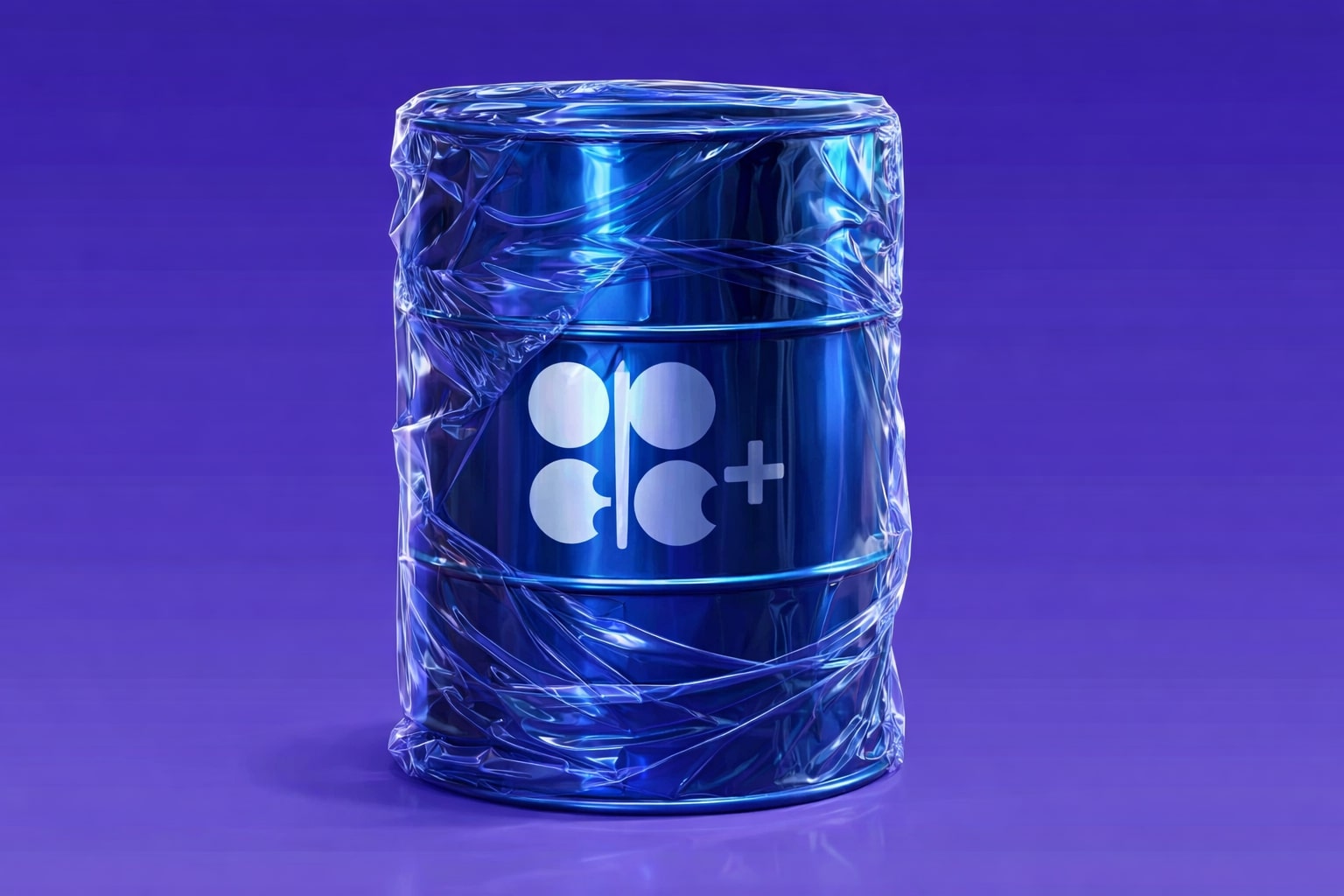
Oil Prices Jump as CL=F Hits $66.71, BZ=F Reclaims $70
WTI and Brent Bounce Off Key Floors Amid Saudi Price Moves and EU Diesel Disruptions | That's TradingNEWS
Crude Oil Market Battleground Intensifies as CL=F and BZ=F Attempt Summer Breakout
WTI Crude (CL=F) and Brent Crude (BZ=F) Face Fragile Floor at $65 and $68
West Texas Intermediate (CL=F) is mounting a tentative defense at $66.71, climbing +2.38% intraday, while Brent (BZ=F) has recovered to $70.04, up +2.34%, both attempting to solidify bottoms in an increasingly volatile macroeconomic battlefield. The $65 floor in WTI has now been tested multiple times and appears to be forming a technical double bottom, but the resilience is vulnerable. A clean break below $64 could upend current market structure, especially as global demand forecasts grow more uncertain in the face of uneven growth out of China and geopolitical tension across the Middle East.
In Brent’s case, the $68 level has become an anchor as the market grinds through a summer of mixed signals. Despite strong seasonal refining demand, a surplus of supply and weaker-than-expected import activity in India are acting as deflationary weights on any breakout attempt. The rally remains more technical than fundamental, with light positioning ahead of OPEC’s early August decision keeping prices artificially buoyant.
Saudi Arabia’s Crude Premiums Signal Tighter Asian Markets Despite Flat OPEC+ Output
Saudi Aramco is reportedly preparing to raise its Official Selling Price (OSP) for Arab Light crude to Asia for September loadings by $0.90–$1.05 per barrel, lifting the premium over Oman/Dubai to $3.10–$3.25. This would follow a $0.70 bump in August’s OSP, which took pricing to its highest since March. The increase is driven by strong Asian refining margins and reduced outbound flows due to seasonal domestic burn, limiting the availability of Saudi barrels for export.
Despite nominal OPEC+ production increases, Saudi Arabia’s export volumes have remained flat. This tightening dynamic is being felt especially across China and India, where demand remains firm but increasingly competitive amid Russia’s discounted supply push. With Aramco holding back volumes for internal consumption, Asian buyers are scrambling for lighter blends, intensifying premiums and setting the stage for potential short-term upward pressure in BZ=F pricing.
Global Diesel Market Disrupted Again as EU Sanctions Redraw Flows
Fresh EU sanctions targeting Russian refined products are now reshaping global diesel flows for the second time since 2022. This regulatory upheaval is adding friction to an already tight diesel market, where price resilience has been one of the few consistent narratives of 2025. Refineries in the U.S. and Europe are recalibrating trade routes, shifting supply chains away from formerly sanctioned volumes toward Latin America and the Middle East. These logistical detours add cost and delay, both of which feed into oil product futures and indirectly support crude benchmarks.
Brent’s resilience above $70 in part reflects the knock-on effects of this diesel disruption. Although not explicitly a crude supply story, the downstream bottleneck reinforces expectations that refiners will bid up physical cargoes of sweet and medium grades in coming weeks to satisfy product yield demands.
US-EU Trade Pact and Venezuela Developments Alter the Supply-Demand Equation
The latest U.S.-EU trade pact has lifted a major tariff threat and includes a $750 billion European commitment to purchase U.S. energy over the coming years. This long-term alignment underpins bullish sentiment for U.S. exporters and stabilizes demand outlook for WTI cargoes. At the same time, the Biden administration is quietly preparing to reinstate swap authorizations for partners of Venezuela’s PDVSA, potentially unleashing more heavy sour barrels into the Atlantic Basin.
However, any return of Venezuelan flows would only partially offset the growing appetite from Gulf Coast refiners who have been aggressively buying Middle Eastern and South American crudes in recent weeks. This rebalancing effort, while a temporary workaround, signals structural tightness in medium-heavy supply grades, a factor that continues to support pricing across both CL=F and BZ=F, despite broader macro drag.
U.S. Onshore Production Hits Record High While Domestic Stocks Tighten
Fresh data shows U.S. onshore oil production reaching new record highs. Yet, paradoxically, commercial inventories have failed to rise meaningfully, suggesting that new barrels are being quickly absorbed—either through refinery runs or export demand. With U.S. LNG also surging on the back of long-term EU deals, the broader energy complex remains tight, and the implications for WTI futures are increasingly bullish.
Moreover, rising U.S. gasoline prices—up 1.85% to $2.136—show retail demand remains robust. This reflects a key component of domestic summer consumption, further tightening the refined product side of the crude equation and giving additional lift to CL=F pricing into August.
China’s Mixed Economic Signals Inject Uncertainty into Oil Demand Projections
While China's Q2 GDP growth came in at 5.2% YoY—beating expectations—the details reveal cracks beneath the surface. Fixed-asset investment and property data remain weak, with new home prices falling for the 12th straight month in June. Steel production also dropped 9.2% YoY to 83.2 million tons, the sharpest monthly fall in ten months. This industrial deceleration suggests reduced diesel and fuel oil demand in construction-heavy provinces.
Iron ore futures surged ahead of the Q2 GDP data, only to retreat sharply afterward, with Singapore futures sliding back toward $98.92/ton. This volatility in raw material markets reflects broader trader hesitation over Chinese demand reliability, and oil is now showing similar traits, with price ranges tightening and intraday volatility growing.
Despite these headwinds, China still managed a 5.3% GDP increase in H1 2025. But with property sector interventions absent and a softening in stimulus rhetoric, the oil market sees more downside demand risk from Asia than upside. Traders are now pricing in a $95–100 short-term range for industrial commodities, a ceiling that indirectly limits bullish momentum for BZ=F.
Geopolitical Risk Persists Across Multiple Fronts
Tensions in the Red Sea remain unresolved. Yemen’s Houthi rebels have escalated their threat to global shipping, warning that any company linked to Israeli ports—regardless of nationality—could be targeted. This raises insurance costs, delays crude cargoes, and inflates freight rates across Suez-linked routes. While not yet triggering a supply shock, this looming geopolitical risk acts as a volatility accelerator, particularly for Brent-linked contracts.
Additionally, Trump’s threat of 100% tariffs on countries purchasing Russian oil remains in play, although enforcement seems unlikely in the near term. The bigger wildcard remains the August 12 deadline for U.S.–China tariff truce extension negotiations in Stockholm. A breakdown in talks would pressure financial markets, suppress industrial demand projections, and weigh heavily on oil prices.
Technical Levels Define Summer Trading Bands for CL=F and BZ=F
WTI crude is tightly boxed in a $64–$69 range. The $65 level has become the de facto support zone, with a break below triggering downside toward $62.50. On the upside, resistance is firm around $68.75. Brent crude follows a similar structure, bouncing off $68 support and facing overhead resistance just shy of $71.20. Until a fundamental catalyst—like a supply disruption or massive demand shock—emerges, the market will likely respect these ranges through the summer.
That said, technicals are starting to firm up on the bullish side. The rebound from multi-week lows aligns with modest RSI divergence and recovering MACD momentum, pointing to a potential squeeze higher, particularly if OPEC+ delivers no surprises at its August 3 meeting.
Verdict: Oil Bulls Regaining Edge — CL=F and BZ=F Rated as SHORT-TERM BUY
With WTI (CL=F) holding the $65 floor and Brent (BZ=F) buoyed by seasonal Asian demand, the risk-reward setup favors a tactical long bias. The U.S.–EU trade alignment, potential Saudi price hikes, and diesel market reshuffling all point to near-term tightness, despite looming macro headwinds from China and tariff uncertainty. Should the August 3 OPEC+ meeting confirm no additional supply, and if Aramco formalizes its September OSP hike, oil prices could challenge the upper end of their summer range.
Rating: BUY (Short-Term Swing to $70–$73 in BZ=F and $68–$70 in CL=F) — contingent on OPEC+ restraint and China demand not deteriorating further. Longer-term upside will require structural demand revival or supply shocks, but current fundamentals support a cautiously bullish bias.
That's TradingNEWS
Read More
-
UCO ETF Price Forecast: Can NYSEARCA:UCO at $18.57 Ride a 2026 Oil Squeeze?
18.12.2025 · TradingNEWS ArchiveStocks
-
XRPI at $10.50 and XRPR at $14.93 Hit XRP ETF Lows While XRP-USD Holds $1.84 After 30 Days of Inflows
18.12.2025 · TradingNEWS ArchiveCrypto
-
Natural Gas Price Forecast: Henry Hub Holds Around $4 as EIA Draw Hits 167 Bcf
18.12.2025 · TradingNEWS ArchiveCommodities
-
USD/JPY Price Forecast: Pair Holds Above 155 As BoJ And US CPI Set Up A Major Break
18.12.2025 · TradingNEWS ArchiveForex



















